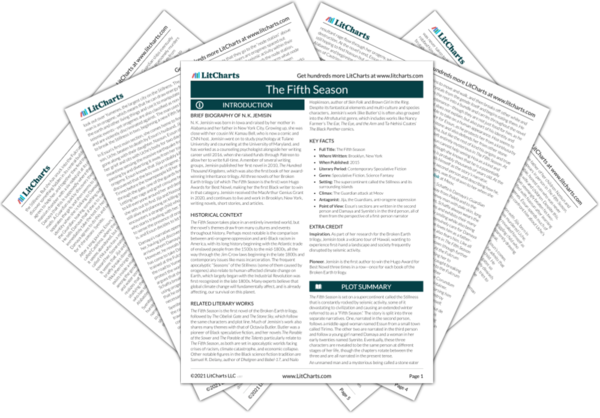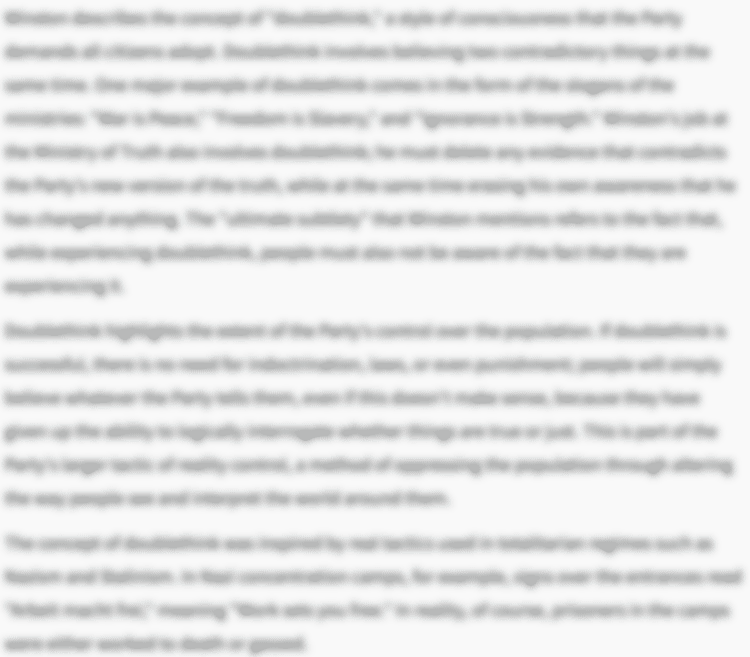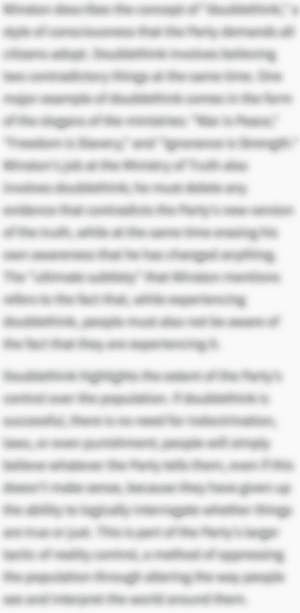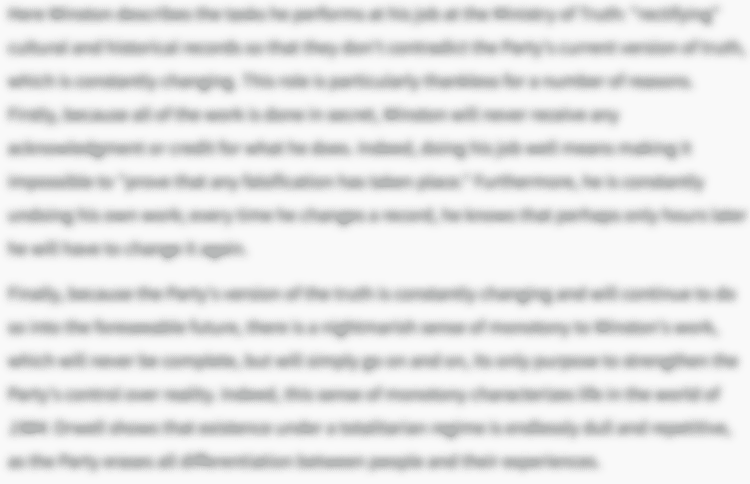Orogeny Quotes in The Fifth Season
And then he reaches forth with all the fine control that the world has brainwashed and backstabbed and brutalized out of him, and all the sensitivity that his masters have bred into him through generations of rape and coercion and highly unnatural selection. His fingers spread and twitch as he feels several reverberating points on the map of his awareness: his fellow slaves. […]
So he reaches deep and takes hold of the humming tapping bustling reverberating rippling vastness of the city, and the quieter bedrock beneath it, and the roiling churn of heat and pressure beneath that. Then he reaches wide, taking hold of the great sliding-puzzle piece of earthshell on which the continent sits.
Lastly, he reaches up. For power.
He takes all that, the strata and the magma and the people and the power, in his imaginary hands. Everything. He holds it. He is not alone. The earth is with him.
Then he breaks it.

Unlock explanations and citation info for this and every other The Fifth Season quote.
Plus so much more...
Get LitCharts A+If the problem is that ferals are not predictable…well, orogenes have to prove themselves reliable. The Fulcrum has a reputation to maintain; that’s part of this. So’s the training, and the uniform, and the endless rules they must follow, but the breeding is part of it too, or why is she here?
It's somewhat flattering to think that despite her feral status, they actually want something of her infused into their breeding lines. Then she wonders why a part of her is trying to find value in degradation.
“Tell them they can be great someday, like us. Tell them they belong among us, no matter how we treat them. Tell them they must earn the respect which everyone else receives by default. Tell them there is a standard for acceptance; that standard is simply perfection. Kill those who scoff at these contradictions, and tell the rest that the dead deserved annihilation for their weakness and doubt. Then they’ll break themselves trying for what they’ll never achieve.”
“Never say no to me,” he says. The words are hot against her skin. He has bent to murmur them into her ear. “Orogenes have no right to say no. I am your Guardian. I will break every bone in your hand, every bone in your body, if I deem it necessary to make the world safe from you.”
“I have to do what you say or you’ll hurt me.”
“And?”
She closes her eyes tighter. In dreams, that makes the bad creatures go away.
“And,” she adds, “you’ll hurt me even when I do obey. If you think you should.”
“Yes.” She can actually hear his smile. He nudges a stray braid away from her cheek, letting the backs of his fingers brush her skin. “What I do is not random, Damaya. It’s about control. Give me no reason to doubt yours, and I will never hurt you again. Do you understand?”
“They kill us because they’ve got stonelore telling them at every turn that we’re born evil—some kind of agents of Father Earth, monsters that barely qualify as human.”
“Yes, but you can’t change stonelore.”
“Stonelore changes all the time, Syenite.” He doesn’t say her name often, either. It gets her attention. “Every civilization adds to it; parts that don’t matter to the people of the time are forgotten. There’s a reason Tablet Two is so damaged: someone, somewhere back in time, decided that it wasn’t important or was wrong, and didn’t bother to take care of it. Or maybe they even deliberately tried to obliterate it, which is why so many of the early copies are damaged in exactly the same way.”
“You think you matter?” All at once he smiles. It’s an ugly thing, cold as the vapor that curls off ice. “You think any of us matter beyond what we can do for them? Whether we obey or not.” He jerks his head toward the body of the abused, murdered child. “You think he mattered, after what they did to him? The only reason they don’t do this to all of us is because we’re more versatile, more useful, if we control ourselves. But each of us is just another weapon, to them. Just a useful monster, just a bit of new blood to add to the breeding lines. Just another fucking rogga.”
She has never heard so much hate put into one word before.
Alabaster smiles, though the muscles of his jaw flex repeatedly. “I would’ve thought you’d like being treated like a human being for a change.”
“I do. But what difference does it make? Even if you pull rank now, it won’t change how they feel about us—”
“No, it won’t. And I don’t care how they feel. They don’t have to rusting like us. What matters is what they do.”
You are representatives of us all, the instructors say, if any grit dares to protest this treatment. When you’re dirty, all orogenes are dirty. When you’re lazy, we’re all lazy. We hurt you so you’ll do the rest of us no harm.
Once Damaya would have protested the unfairness of such judgments. The children of the Fulcrum are all different: different ages, different colors, different shapes. […] One cannot reasonably expect sameness out of so much difference, and it makes no sense for Damaya to be judged by the behavior of children who share nothing save the curse of orogeny with her.
But Damaya understands now that the world is not fair. They are orogenes, the Misalems of the world, born cursed and terrible. This is what is necessary to make them safe.
What Damaya sees in them is something she does not understand at first, though she wants it with a desperation that surprises and unnerves her. As those first weeks pass into months and she grows familiar with the routine, she begins to understand what it is that the older orogenes display: control. They have mastered their power. […]
If to achieve this Damaya must endure a few broken bones, or a few years in a place where no one loves her or even likes her, that is a small price to pay.
“What do you want? An apology? Then I apologize. You must remember, though, that most normal people have never seen an orogene, let alone had to do business with one and—” She spreads her hands. “Isn’t it understandable that we might be…uncomfortable?”
“Discomfort is understandable. It’s the rudeness that isn’t.” Rust this. This woman doesn’t deserve the effort of her explanation. Syen decides to save that for someone who matters. “And that’s a really shitty apology. ‘I’m sorry you’re so abnormal that I can’t manage to treat you like a human being.’”
“You’re a rogga,” Asael snaps, and then has the gall to look surprised at herself.
“Well.” Syenite makes herself smile. “At least that’s out in the open.”
(Friends do not exist. The Fulcrum is not a school. Grits are not children. Orogenes are not people. Weapons have no need of friends.)












